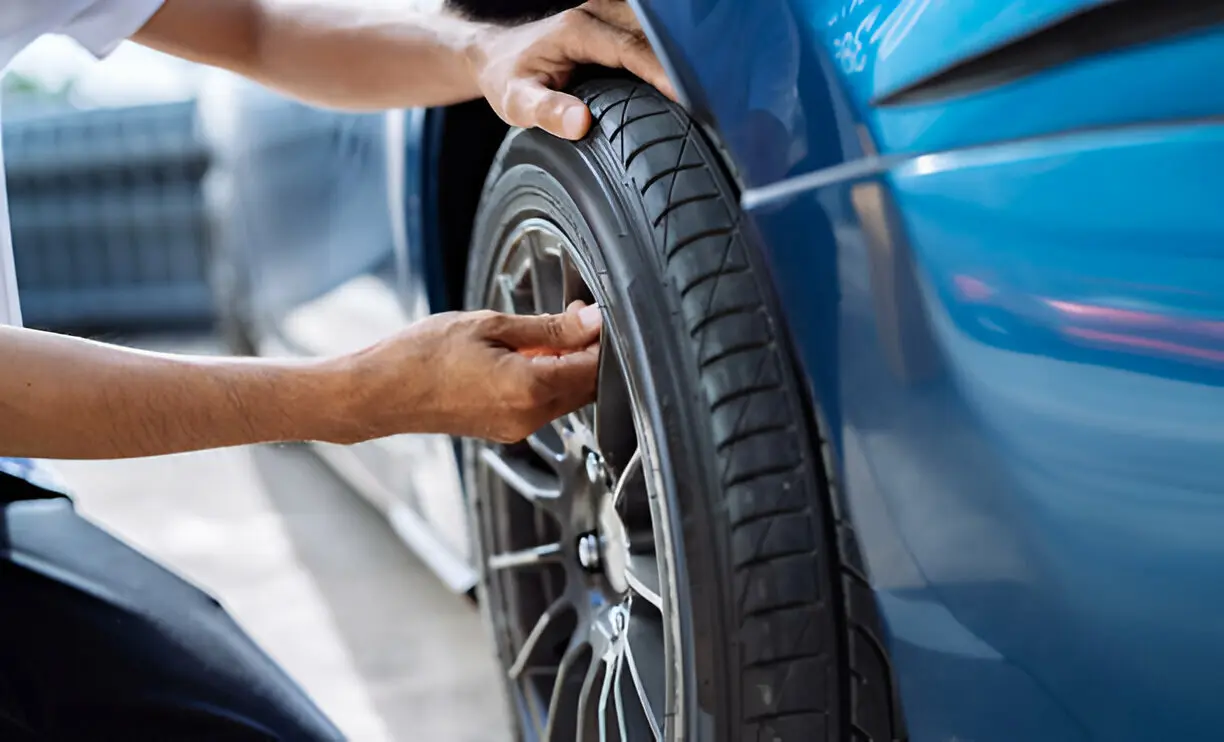7 Maintenance Tips to Extend the Life of Your Tyres
Tyres are one of the most critical components of any vehicle, ensuring safety, performance, and efficiency. However, they often endure the brunt of wear and tear, leading to premature damage if not properly maintained. Regular tyre care not only extends their lifespan but also enhances fuel efficiency, improves handling, and reduces the risk of accidents.
In this guide, we’ll explore seven essential maintenance tips to help you extend the life of your tyres and get the most out of your investment.
Why Tyre Maintenance is Essential
Tyres are the only point of contact between your vehicle and the road. Neglecting their upkeep can lead to uneven wear, frequent replacements, and even dangerous driving conditions. Proper maintenance ensures:
- Improved fuel economy.
- Better vehicle handling.
- Reduced environmental impact.
- Enhanced safety for you and your passengers.
Inspect Tyre Pressure Regularly
Maintaining the correct tyre pressure is one of the simplest and most effective ways to extend tyre life.
Effects of Improper Tyre Pressure
Under-inflated tyres increase rolling resistance, leading to faster wear and reduced fuel efficiency. Over-inflated tyres, on the other hand, create uneven tread wear and reduce road grip.
How to Check Tyre Pressure
Use a reliable tyre pressure gauge to measure the pressure at least once a month or before long trips. Refer to your vehicle’s manual or the placard on the driver’s side door for the recommended pressure levels.
Rotate Your Tyres
Tyres wear differently depending on their position on the vehicle. Front tyres often experience more wear due to steering and braking forces.
Why Rotation Matters
Rotating your tyres ensures even wear across all four tyres, improving their overall lifespan and performance.
When to Rotate Tyres
It’s recommended to rotate your tyres every 8,000 to 10,000 kilometers or during every oil change. Follow a cross-rotation pattern for optimal results, unless your tyres are unidirectional or staggered.
Balance Your Tyres
Unbalanced tyres can cause uneven wear, vibration, and even damage to your suspension system.
Signs of Imbalance
- Vibrations in the steering wheel or seats while driving.
- Uneven tread wear.
- Noisy driving at certain speeds.
How to Maintain Tyre Balance
Visit a professional service center to have your tyres balanced whenever you notice these symptoms or during routine maintenance.
Check Tyre Alignment
Wheel alignment refers to the angle and direction at which your tyres sit on the road. Misalignment can lead to uneven tyre wear and poor handling.
Causes of Misalignment
- Driving over potholes.
- Hitting curbs.
- Wear and tear on suspension components.
When to Check Alignment
If your car pulls to one side, your steering feels off-center, or you notice uneven tyre wear, have your alignment checked by a professional.
Monitor Tread Depth
The tread on your tyres provides grip and channels water away to prevent hydroplaning. Worn-out treads compromise safety and performance.
How to Measure Tread Depth
Use a tread depth gauge or the “penny test.” Insert a coin into the tread grooves with the head facing down. If you can see the top of the head, it’s time to replace the tyre.
Legal Requirements
Most regions require a minimum tread depth of 1.6 mm. Replace tyres before they reach this limit to maintain safety.
Avoid Overloading Your Vehicle
Every vehicle has a maximum load capacity, which is specified in the owner’s manual or on the placard inside the driver’s door.
Effects of Overloading
Exceeding this limit puts extra stress on your tyres, leading to excessive heat buildup, faster wear, and an increased risk of blowouts.
How to Prevent Overloading
- Distribute weight evenly across the vehicle.
- Avoid carrying unnecessary heavy items in the car.
- Check tyre pressure when carrying heavy loads, as it may require slight adjustments.
Practice Good Driving Habits
Your driving style has a significant impact on tyre longevity. Aggressive driving behaviors can accelerate wear and tear.
Habits to Avoid
- Sudden braking or hard acceleration.
- Taking sharp turns at high speeds.
- Driving over potholes or rough terrain without slowing down.
Tips for Better Driving
Drive smoothly and maintain a consistent speed. Be cautious on uneven roads and avoid unnecessary stress on your tyres by steering clear of road hazards.
Additional Tips for Tyre Maintenance
Store Tyres Properly
If you’re storing spare or seasonal tyres, keep them in a cool, dry, and dark place. Avoid exposure to direct sunlight or extreme temperatures, as these can degrade the rubber.
Use Quality Tyres
Investing in high-quality tyres suited to your vehicle and driving conditions can save you money in the long run by reducing the need for frequent replacements.
Regular Professional Inspections
Schedule periodic inspections with a trusted mechanic to catch any issues early, such as small punctures or structural damage, which can be repaired before they worsen.
The Long-Term Benefits of Tyre Maintenance
Proper tyre maintenance offers long-term benefits that go beyond cost savings. Well-maintained tyres:
- Enhance safety by improving traction and braking performance.
- Reduce your carbon footprint by improving fuel efficiency.
- Provide a smoother and more comfortable driving experience.
By incorporating these seven maintenance tips into your routine, you’ll not only extend the life of your tyres but also ensure a safer and more enjoyable driving experience. Make tyre care a priority to protect your investment and stay safe on the road.







